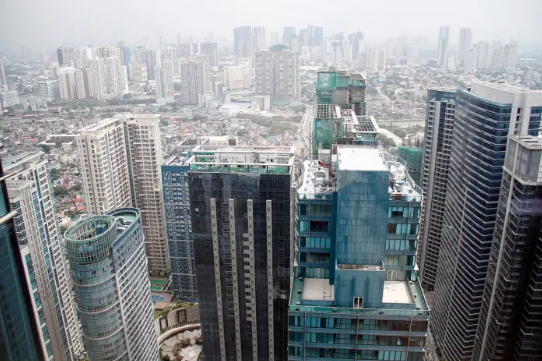PH seen growing fastest in SE Asia

THE Philippines is expected to lead Southeast Asian growth this year and the next following latest Asian Development Bank (ADB) revisions to its forecasts.
The Manila-based lender, in the July edition of its Asian Development Outlook, maintained its Philippine gross domestic growth (GDP) forecasts at 6.0 percent and 6.2 percent for this year and the next.
Those for erstwhile leader Vietnam, however, were cut to 5.8 percent and 6.2 percent from April's 6.5 percent and 6.8 percent.
The 2023 projection for the Philippines is at the lower end of the government's 6.0- to 7.0-percent target while that for 2024 falls below the medium-term goal of 6.5 to 8.0 percent.
The ADB also maintained its 2023 and 2024 growth forecasts for Indonesia (4.8 percent and 5.0 percent, respectively) and Malaysia (4.7 percent and 4.9 percent).
First-quarter growth in Indonesia was said to be below pre-pandemic averages and hampered by no signs of revenge spending, a wait-and-see attitude by businesses and slower exports.
Malaysian growth fell in the first three months of the year, meanwhile, and is expected to ease further in the coming quarters despite higher private and public investments, thus the decision to retain earlier growth forecasts.
The 2023 outlook for Singapore was trimmed to 1.5 percent from 2.0 percent as manufacturing contracted and amid uncertainty over financial risks and the impact of higher US interest rates. The forecast for 2024 was retained at 3.0 percent.
Thailand, meanwhile, is expected to grow by a stronger 3.5 percent this year instead of 3.3 percent following strong private consumption and service exports in the first half. Its projected 2024 growth was kept at 3.7 percent.
As for Vietnam, the ADB noted that GDP growth slowed substantially in the first half as external demand weakened and manufacturing output moderated.
The forecasts for Southeast Asia as a whole were trimmed to 4.6 percent and 4.9 percent for 2023 and 2024, respectively, from 4.7 percent and 5.0 percent.
The ADB noted that the Philippines' first-quarter GDP growth of 6.4 percent was driven by robust investment and private consumption, with rising employment, higher production and retail sales, and brisk private and public construction providing support.
Net exports weighed on GDP, meanwhile, with a decline in merchandise exports partly offset by increased service exports.
Tourism was said to have rebounded and growth stayed strong for business process outsourcing and information services.
As for Southeast Asia, the ADB said that weaker global demand for manufactured goods had slowed growth despite continued domestic demand.
Private consumption was said to have driven first-half growth as labor market conditions and incomes improved across the region.
Revenge travel has led to increased tourist arrivals and related activities, while a recovery in China, while subdued, is supporting demand for agricultural exports.
Inflation forecasts for the region, meanwhile, were trimmed to 4.3 percent and 3.2 percent from 4.4 percent and 3.3 percent for 2023 and 2024, respectively, given easing commodity prices and tighter monetary policy.
Consumer price growth in the Philippines is still expected to remain elevated at an average of 6.2 percent this year, significantly higher than the 2.0- to 4.0-percent target of the Bangko Sentral ng Pilipinas.
The rate, however, is expected to return to target at 4.0 percent next year.
Inflation forecasts were also maintained for Malaysia, Singapore and Thailand, while those for Indonesia and Vietnam were lowered.
Source: https://www.manilatimes.net/2023/07/20/business/top-business/ph-seen-growing-fastest-in-se-asia/1901457?utm_source=newsletter&utm_medium=email&utm_campaign=daily_business_briefing_july_20_2023_the_manila_times&utm_term=2023-07-20&fbclid=IwAR0zcSxapvBY7Fo3XLxkZ7CmpFjD9P83pmMDRZViF5C4AoufmiyNAVOWjHk
Tags: Asian Development Outlook Philippine gross domestic growth (GDP)










